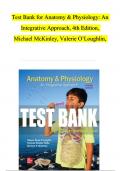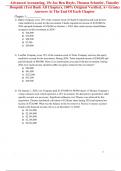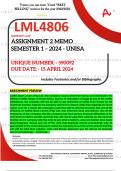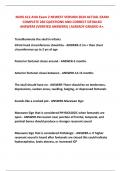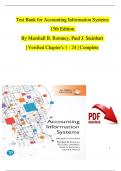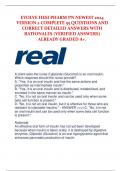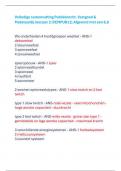Exam (elaborations)
Test Bank for Anatomy and Physiology: An Integrative Approach, 4th Edition, McKinley, (Ch 1 – 29) > Download as Pdf File <
******** INSTANT DOWNLOAD AS PDF FILE ******** Test Bank for Anatomy and Physiology: An Integrative Approach, 4th Edition, McKinley, (Ch 1 – 29) > Download as Pdf File < 1. Test bank for McKinley Anatomy and Physiology 4th edition PDF download 2. Anatomy and Physiology Integrative Approa...
[Show more]
